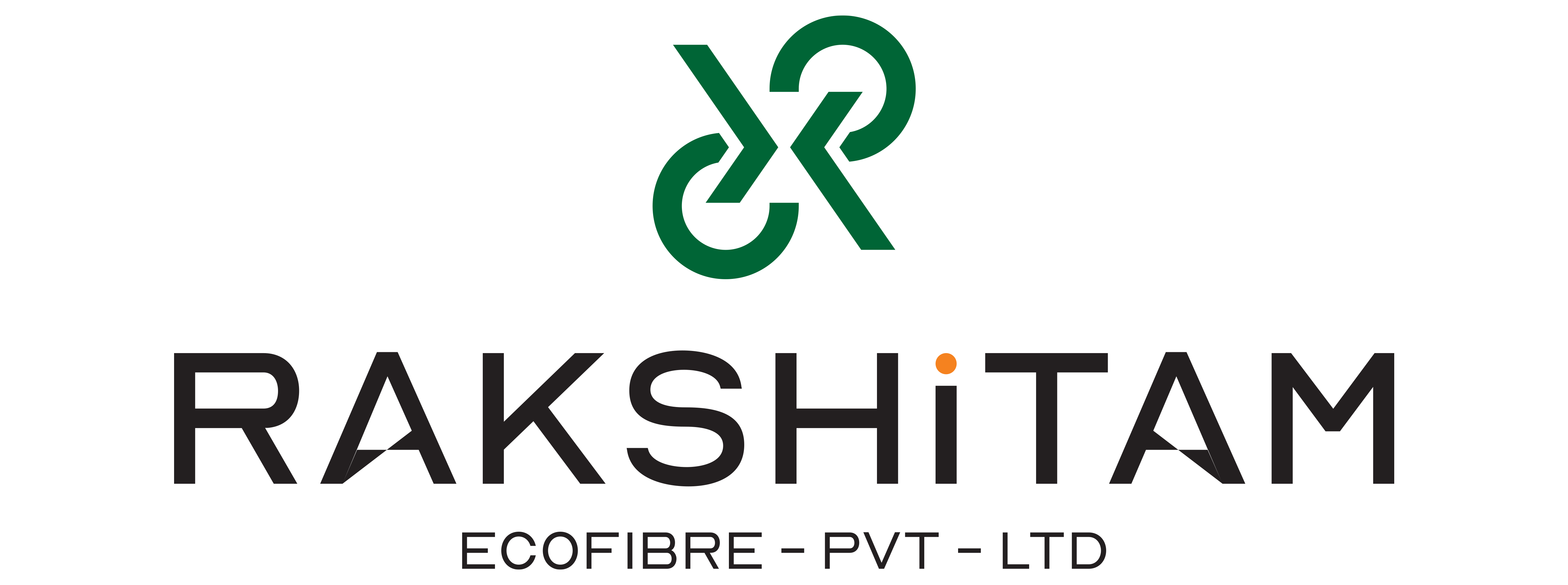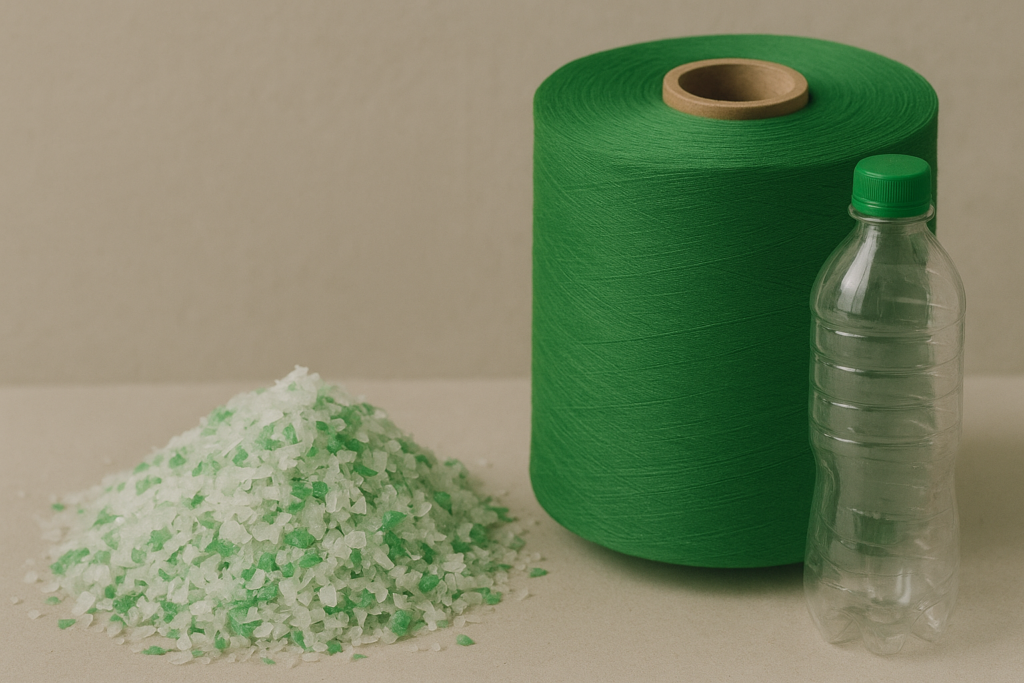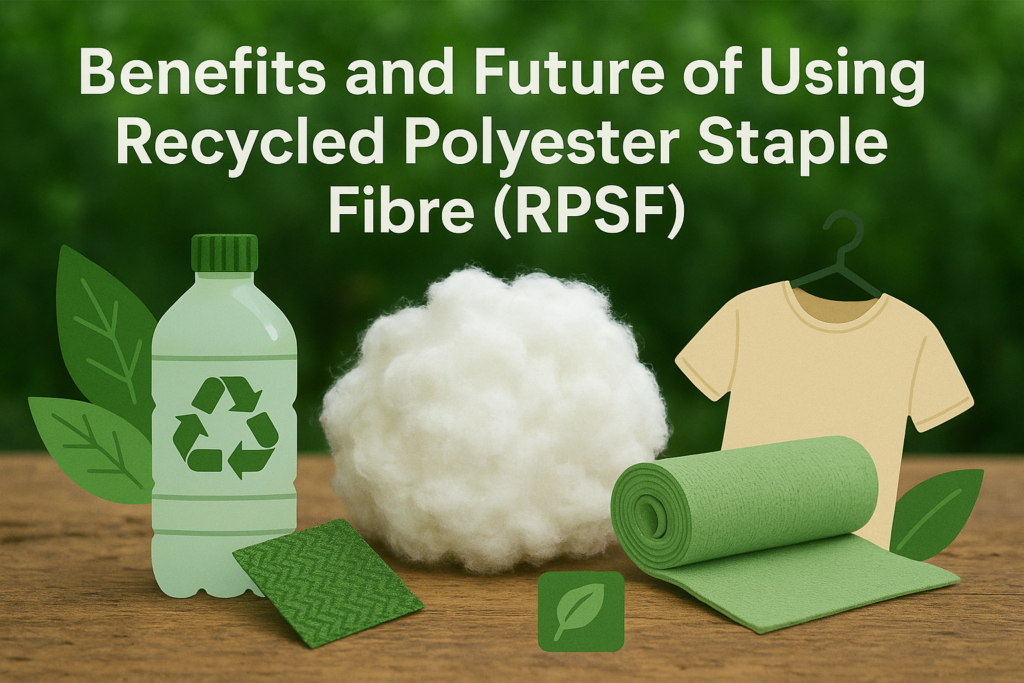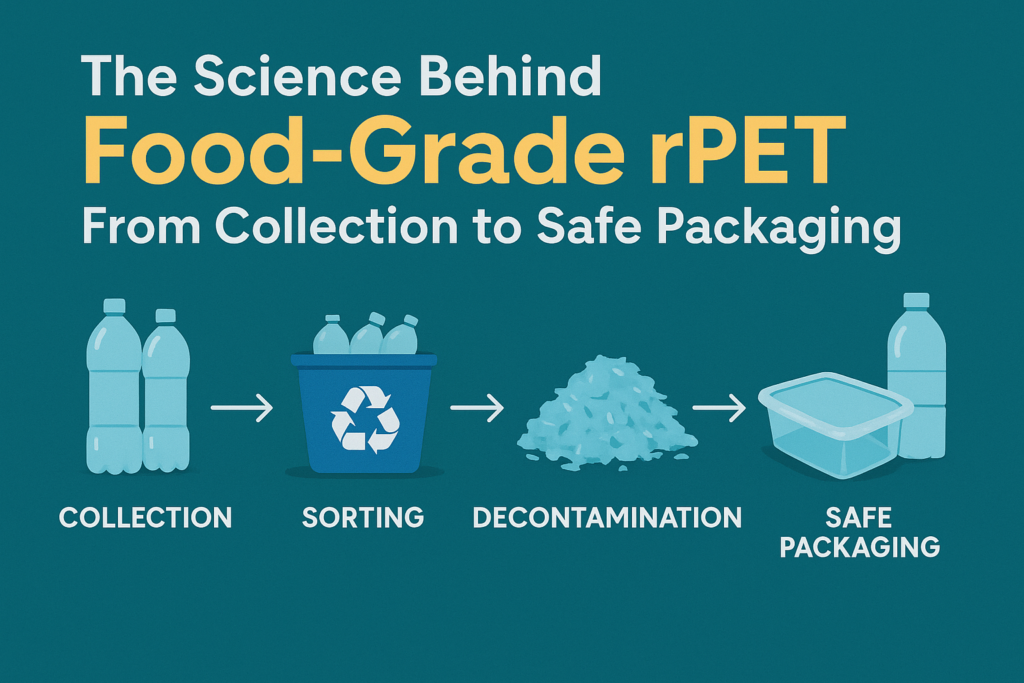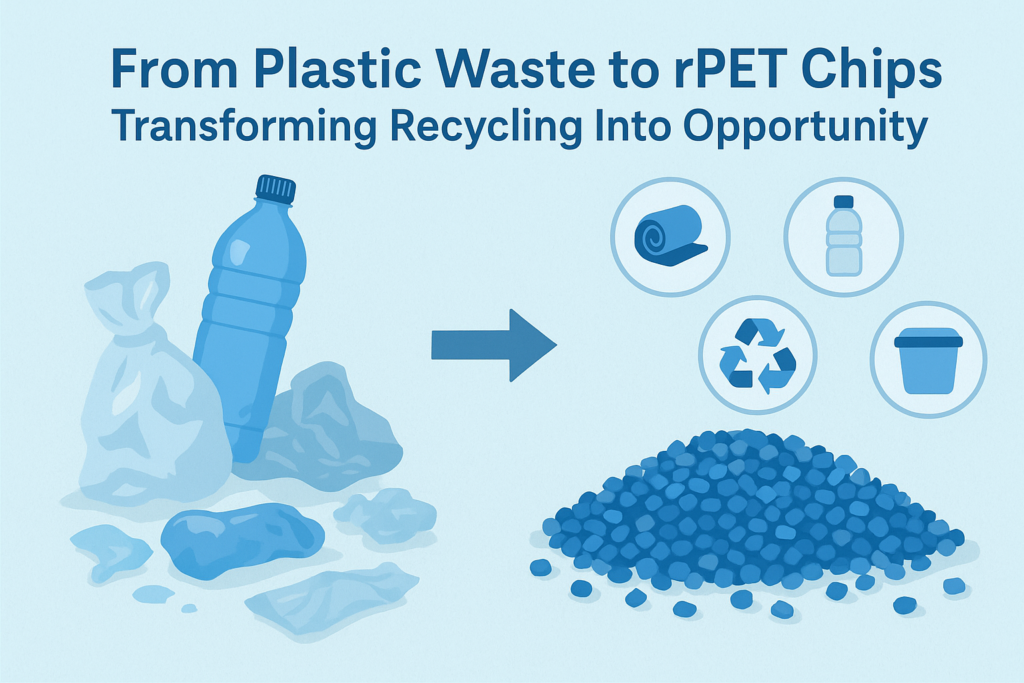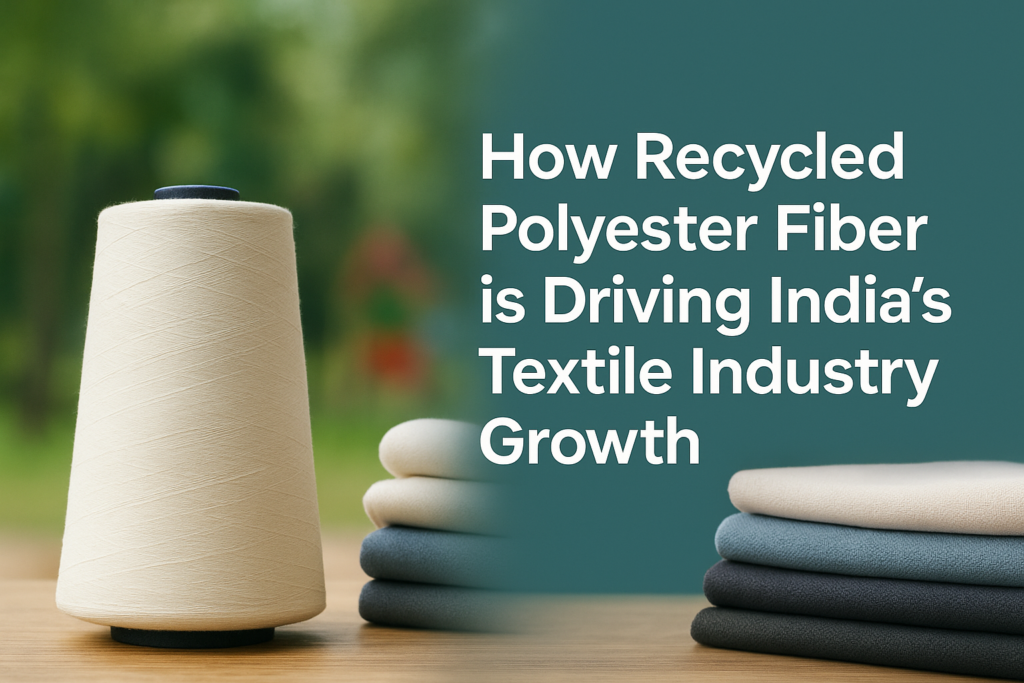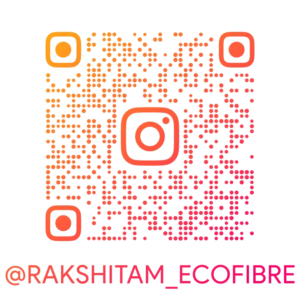Sustainability has matured from marketing buzzword into urgent mandate. By 2025, the fashion world is responding with clarity and technological drive. A pivotal advance come from PET flakes, the humble remnants of spent plastic bottles, which are now reborn as high-performance, sustainable fabrics. This is more than clever re-use: it is a fundamental re-engineering that slashes landfill loads while turning yesterday’s trash into tomorrow’s treasure.
What, exactly, are PET flakes?
Polyethylene terephthalate, or PET, is the lightweight, sturdy polymer that engineers bottled drinks. When that single-use bottle has delivered its refreshment, it is gathered, rinsed, and ground into small, translucent chips. Those chips, or PET flakes, serve as the foundational ingredient for recycled-polyester filament, which then weaves its way into activewear, upholstery, and the growing roster of circular goods. The arc from litter to luxury is as tidy as it is necessary.
The Value Chain for Recycled Textiles
Transforming PET flakes back into fabric requires a sequence of precise, tightly controlled operations that safeguard both ecological principles and product performance.
Collection and Sorting
Used PET bottles come from households, corporate recycling bins, and public drop-off depots. On arriving at the plant, dedicated sorting lines carefully identify only the bottles that satisfy the rigorous purity specifications required for effective reclaiming.
Cleaning and Flaking
After collection, the bottles pass through several cleaning stages that remove labels, adhesives, and any remaining liquids. Once thoroughly washed and dried, the containers are mechanically cut into uniform PET flakes.
Melting and Extrusion
The flakes are then melted and pushed through spinnerets, creating continuous fibers or filament yarns. During extrusion, conditions are precisely adjusted to produce a polymer quality that matches that of virgin polyester, but without the environmental cost.
Weaving and Dyeing
These yarns are then converted into fabric through either weaving or knitting, with dyeing cycles that prioritize low-impact, waterless, or low-water technologies to minimize both dye effluents and chemical loads.
Garment Production
The resultant textiles are fashioned into a wide spectrum of products, activewear, outerwear, and carry items, each designed to meet stringent performance and aesthetic criteria, yet with a footprint markedly lighter than that of conventional polyester.
Why Recycled PET Will Matter Even More in 2025
With stricter climate policies and consumers insisting on transparency and sustainability, recycled PET (rPET) continues to deliver proven, scalable impact:
- Diverts Plastic Waste: Each metric ton of rPET manufactures nearly 60,000 discarded PET bottles into new products, reducing the burden on landfills and marine ecosystems.
- Slashes Energy Demand: Converting rPET into fiber requires 60% less energy than producing virgin polyester, translating directly to lower grid draw.
- Lowers CO₂ Output: The life-cycle emissions of rPET are 30% lower, driving down the fashion sector’s overall greenhouse gas profile.
- Conserves Water: Recycled fibers and optimized dyeing consume substantially less water, a critical advantage in water-stressed manufacturing zones.
Pioneers like Adidas, H&M, and Patagonia are moving toward 100% recycled polyester in core lines, encouraging peers to match the commitment and reinforcing rPET’s status as the cornerstone of circular textile production.
Current Challenges in Scaling rPET
Even with advancements, we still face these hurdles:
- Supply Chain Weaknesses: Irregular waste collection and insufficient recycling facilities hinder the steady flow of high-quality PET flakes in significant areas.
- Microplastic Release: rPET fabrics continue to release microfibers during laundering, and the issue remains partly addressed.
- Trust Issues: Absence of uniform certification and traceability leaves consumers doubting the true sustainability of the product.
Future of Recycled Textiles
Emerging solutions—chemical recycling, AI-driven sorting, and blockchain tracking—are tightening the loop and increasing traceability in the recycled textile supply chain. Concurrently, circular business models are developing garments intentionally engineered to be recycled again, not discarded.
Conclusion
Turning PET flakes into fabric represents more than a process; it embodies meaningful ecological progress. By 2025, recycled textiles are positioned to guide the industry toward a cleaner, greener future, bottle by bottle. As shoppers and brands champion rPET, fashion evolves into a vehicle for both identity and ecological stewardship.
